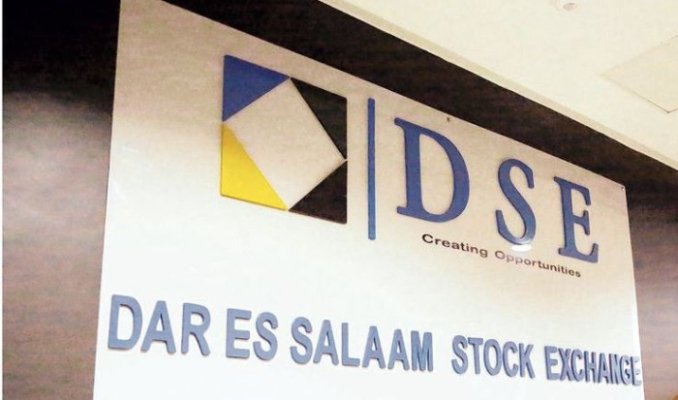Tanzania’s Market Grew Through Debt, Not Speculation (Week 41)
On the DSE (DSE:TZ), bond turnover rose from TZS 34.12 bn to 86.07 bn (+152%), dwarfing equities at TZS 2.56 bn. CRDB (DSE:CRDB) climbed 8.5% to TZS 1,280, while NMB (DSE:NMB) held TZS 7,800 and TBL (DSE:TBL) at TZS 10,200 — proof Tanzania’s market now grows through debt, not speculation.

Between 7 and 10 October 2025, the Dar es Salaam Stock Exchange (DSE: DSE.TZ) embodied a frontier market evolving toward maturity—less driven by equity speculation and increasingly anchored in fixed-income confidence. Total market capitalization expanded from TZS 21.42 trillion to 21.76 trillion (+1.6%), while domestic capitalization grew faster at +2.5%, from TZS 13.51 trillion to 13.85 trillion. Yet the liquidity engine remained unmistakable: bonds contributed 96–98% of total traded value, confirming Tanzania’s debt market as the exchange’s core pillar of stability.
Bond turnover surged from TZS 34.12 billion on 7 October to TZS 86.07 billion by week’s end—a 152% rise within three sessions. Equity turnover, by contrast, averaged just TZS 2.03 billion, yielding a bond-to-equity value ratio (BEVR) above 40x. This skew reflects a structural preference among institutional investors—pension funds like PSSSF and NSSF, along with insurers—who continue lengthening duration exposure amid disinflation and yield stability. Trading data show most transactions clustering around 95–113% of par, with 20-year and 25-year papers trading at premiums that compress effective yields into the 12.5–14.5% band, compared with 15–17% earlier in the quarter. This yield flattening signals rising confidence in the fiscal outlook and a Bank of Tanzania policy stance that prioritizes long-term predictability over short-term liquidity.
Equities mirrored this stability. The DSE All Share Index (DSEI) rose 1.57% to 2,538.27, while the Tanzania Share Index (TSI) advanced 2.49% to 5,231.17, suggesting domestic counters outperformed cross-listed ones. The market’s leadership was narrow but potent: CRDB Bank (DSE: CRDB) climbed from TZS 1,180 to 1,280 (+8.5%), moving 2.3 million shares and accounting for more than 45% of weekly equity turnover. NMB Bank (DSE: NMB) held firm near TZS 7,800, and Tanzania Breweries Limited (DSE: TBL) steadied at TZS 10,200, illustrating sustained institutional accumulation. Smaller counters such as DSE Plc (DSE: DSE) and Tanga Cement (DSE: TCCL) saw negligible volume—an enduring reflection of low retail engagement.
Foreign participation remained fluid but not erratic. Overseas investors comprised 58.45% of buys and 30.25% of sells on 7 October, then reversed to 36.52% buys vs. 52.13% sells midweek before moderating near parity by Friday. The Foreign Net Flow Index (FNFI) shifted from +0.32 to −0.09, implying short-term profit-taking and portfolio rotation rather than sustained capital flight. Domestic investors, particularly local institutions, filled the gap, lifting participation to 63% midweek—a continuation of the 2025 pattern where Tanzanian funds replace short-term repos with medium-term bond positions and targeted equity holdings.
The bond market’s depth is now feeding directly into macro stability. Demand for 20-year papers, priced near TZS 1.07 million per 1M face value, has pushed secondary yields lower while keeping the USD/TZS exchange rate at 2,441 and interbank rates near 5.3%. The yield curve’s flattening implies ample liquidity, anchored inflation expectations (CPI 3.2%), and restored investor trust in fiscal coordination. Tanzania’s capital markets, once defined by episodic rallies, are now sustained by predictable income flows—an indicator of structural transition rather than cyclical exuberance.
Still, the equity segment remains narrow. Five counters—CRDB, NMB, TBL, TCCL, and DSE Plc—regularly capture over 70% of equity turnover. This concentration limits price discovery yet simultaneously embodies confidence in quality: CRDB’s 40% dividend payout and NMB’s 45% ROE-based distribution justify their dominance. The DSE’s liquidity problem, therefore, is not one of weakness but imbalance—a marketplace abundant in stability yet short on diversity.
By week’s close, the message was clear: Tanzania’s capital markets are maturing in reverse—liquidity first, diversity later. The bond rally, coupled with yield compression and equity steadiness, has produced a rare alignment across asset classes. A market capitalization gain of over TZS 330 billion in three days, alongside yield tightening across maturities, positions Dar es Salaam among the few African frontier bourses exhibiting synchronized bond–equity expansion.
If this equilibrium endures, the next frontier will not be speculative turnover but corporate issuance. As sovereign yields settle and pension liquidity deepens, the DSE’s evolution from a sovereign platform to a genuine capital-formation hub may finally be within reach.
Access the Interactive DSE Market Dashboard below





